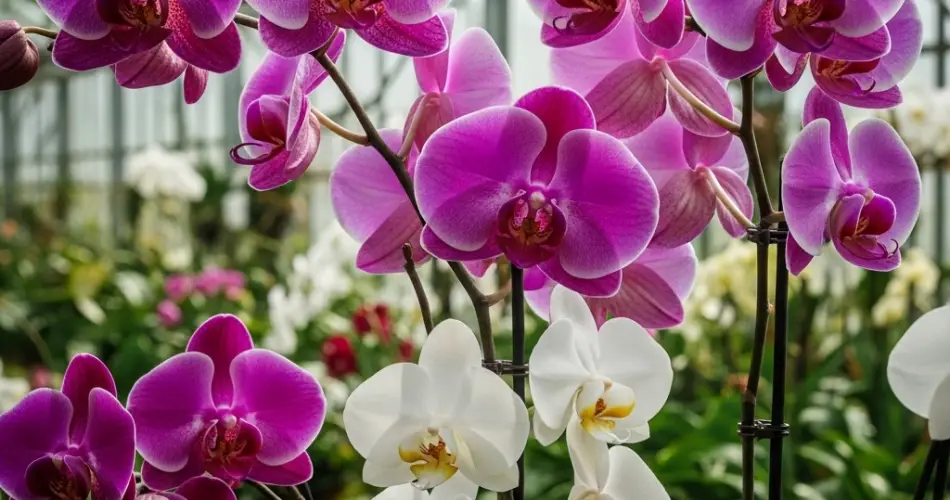Orchids are among the most exotic and captivating flowers you can grow at home. Known for their long-lasting blooms and elegant structure, they’re often seen as delicate and high-maintenance. But with a little knowledge—and some help from common kitchen scraps—you can support your orchid’s blooming cycle and harvest flowers with surprising ease.
Harvesting orchids doesn’t mean cutting them from the wild. In the gardening world, it refers to properly encouraging healthy flowering, knowing when and how to cut spent blooms, and reusing parts of the plant for future propagation or care. Here’s how to make the most of your orchids using zero-cost materials from your kitchen.
Understanding the Orchid Bloom Cycle
Before we talk harvesting, it’s essential to understand that orchids operate on a rhythm. A typical orchid (like the popular Phalaenopsis) blooms once or twice a year. Each bloom can last for several weeks or even months if conditions are right.
Once the flowers fall, the plant enters a resting phase. This is a perfect time to help the plant recover and prepare it for the next bloom—using some clever techniques, including nutrient recycling from kitchen scraps.
The Role of Kitchen Scraps in Orchid Care
Orchids are epiphytes, which means they don’t grow in regular soil and absorb moisture and nutrients from their environment. This makes them ideal candidates for natural, homemade feeding.
Some common kitchen scraps can be turned into mild, orchid-safe fertilizers that promote healthy roots and flowering. These include:
-
Banana peels – rich in potassium and phosphorus, essential for blooming
-
Used coffee grounds – provide gentle acidity and trace minerals
-
Rice water – contains starches that encourage root and leaf strength
-
Green tea bags – lightly acidic and rich in antioxidants
These natural ingredients, when used properly, can support your orchid’s growth and encourage more consistent blooming.
Step-by-Step: How to Encourage and Harvest Orchid Blooms
1. Observe the Blooming Phase
First, wait until the orchid finishes blooming. Don’t rush to cut off the spike right after the flowers fall. Instead, look for signs of a green, healthy flower spike—this might bloom again if left intact.
If the spike turns brown or yellow, it’s time to remove it completely. Use clean scissors to cut the spike about an inch above the base.
2. Feed Your Orchid Naturally
Now that your orchid is in its resting phase, it’s a great time to boost its nutrients with homemade solutions:
Banana Peel Water
Chop one banana peel and soak it in a cup of water overnight. Strain and use this water to lightly mist the orchid’s roots or add a tablespoon to its watering once every two weeks.
Rice Water Rinse
After boiling rice, save the water (unsalted, of course) and let it cool. Use it to water your orchid once a month. The mild starch helps strengthen the roots and encourages new shoots.
Used Coffee Grounds (In Moderation)
Dry and crush used coffee grounds. Mix a teaspoon with water and let it sit for a few hours before applying to the potting media. Avoid direct contact with roots, and use only once a month.
Green Tea Spritz
Steep a used green tea bag in a cup of water and cool it. Mist the leaves lightly—not the roots—with the tea once every 2–3 weeks for a gentle antioxidant boost.
Harvesting for Display or Propagation
If your orchid produces a new flower spike, wait until the blooms are fully open before cutting. Harvest with a sharp, sterilized tool and leave at least 2–3 inches of stem to keep the plant healthy.
Place the cut flowers in a vase with clean water for a stunning, long-lasting indoor display.
If you’re interested in propagation, keep an eye out for keikis (baby orchids) that sometimes grow along the flower spike. When the keiki develops a few roots, you can carefully separate it and plant it in its own container with orchid bark.
Extra Tips for Success
-
Light matters: Orchids need bright, indirect sunlight to bloom again.
-
Don’t overwater: Water once the potting media is almost dry, usually every 7–10 days.
-
Humidity helps: Place a tray of water with pebbles under the pot to maintain air moisture.
-
Use clear pots: They help you monitor root health and water needs.
Final Thoughts
Harvesting orchid blooms and promoting re-flowering is a rewarding process—and it doesn’t require expensive fertilizers or complex routines. With just a few kitchen scraps and some patience, you can keep your orchid healthy, happy, and bursting with blooms.
From banana peels to rice water, nature already provides everything you need to give your orchids the care they deserve. So, the next time you’re peeling a banana or making rice, save those scraps—your orchid will thank you.



